Enter Email ID to Read Further

Guide to Building Multi- Touch Attribution Dashboards on HubSpot
For Impactful GTM Motions
Introduction
Irrespective of the size of your revenue teams, each one of them is working towards uplifting your revenue, at one stage of the funnel or another. The marketing team is leading revenue in the first quadrant, the sales takes the middle quadrant, and the customer success team is driving revenue at the last quadrant.
These teams are the bread earners of your organization, but how much bread do they each bring in? As a growth oriented org, your board should have a granular overview of each of the revenue team’s contributions to your growth. And that’s where you deploy your attribution models.
So, let’s look at those attribution models that give credit to each team across a buyer's journey!
Multi-touch Attribution Models.
As you know, multi-touch attribution models assign credit to multiple touchpoints throughout the customer journey, recognizing that customers interact with a brand in various ways before converting. Some of these models are-
- Linear attribution that give equal credit to all touchpoints,
- Time decay attribution that give more credit to recent interactions,
- U-shaped attribution that assigns most credit to the first and last touchpoints) and
- W-shaped attribution that assigns credit to the first touch, lead creation, and conversion.
Choosing the Right Attribution Model for Your Organization
Choosing the right attribution model for your company depends on several factors, including your business goals, sales cycle length, and marketing strategy. Let’s break it down into actionable steps for you-
Selecting the right attribution model for specific metrics and dimensions can help you gain precise insights into your demand generation efforts. Here's a breakdown of which attribution model works best for various metrics and dimensions:
1. Brand Awareness - First-Touch Attribution
Brand awareness requires giving full credit to the first interaction, helping you identify which channels are most effective at generating initial interest. Therefore a First-Touch Attribution works best for brand awareness.

2. Lead Generation - Position-Based (U-Shaped) Attribution
Lead generation happens across the funnel, and it needs a balanced view of which channels are contributing to lead generation. A Position-Based (U-Shaped) Attribution model gives significant credit to the first touch (awareness) and the last touch (conversion), along with some credit to the middle interactions, thereby justifying this model for lead generation.
3. Engagement and Nurturing - Linear Attribution
Linear attribution assigns equal credit to all touchpoints, making it ideal for understanding the overall engagement and nurturing process across multiple interactions.

4. Conversion Rate Optimization - Last-Touch Attribution
Conversion rate optimization focuses on the final interaction before conversion. So, while multi-touch models are generally better, last-touch attribution can specifically highlight the final interaction on the website, useful for optimizing the closing stage of the funnel.

5. Sales and Revenue Attribution - W-Shaped Attribution
W-shaped attribution can justifiably track the journey from lead to revenue. Therefore, assigning credit to the first touch, the lead conversion touchpoint, and the final conversion, makes it ideal for attributing sales and revenue to their respective teams.

6. Customer Lifetime Value (CLV) - Full Path Attribution
This model includes all interactions before and after conversion, which is necessary in crediting each time with improving the customer’s lifetime value. Thus, a Full Path Attribution Model rightfully provides a comprehensive view of the customer lifecycle and helps measure the long-term value of customers.

7. Customer Retention - Full Path Attribution
Full path attribution considers post-conversion interactions, making it ideal for understanding customer retention and loyalty, and attributes it to the right team.

8. Marketing ROI - Time Decay Attribution
Time decay attribution gives more credit to interactions closer to the conversion, which can help in understanding the ROI of marketing activities over time, particularly for long sales cycles.


10. Campaign Effectiveness - Linear Attribution
For campaign effectiveness, a balanced view of all touchpoints, for evaluating the overall effectiveness of marketing campaigns across multiple channels is required. Linear attribution provides this balanced view of channel contribution.
By selecting the appropriate multi-touch attribution model for each specific metric, you can gain more accurate and actionable insights into the performance of your marketing efforts.
Building These Attributions on HubSpot
Once you can understand and apply the right attribution model to your efforts, how to implement it?
The answer: HubSpot Reports and Dashboards!
As loyal HubSpot users, you can go about these analyses on the CRM, with a few easy steps. Here's a step-by-step guide:
Step 1: Set Up Multi-Touch Attribution Reporting
HubSpot offers several attribution models to choose from:
- First-Touch Attribution
- Last-Touch Attribution
- Position-Based (U-Shaped) Attribution
- W-Shaped Attribution
- Full Path Attribution
- Linear Attribution
- Time Decay Attribution
Choose the models that align with your business goals (i.e. scroll up a few lines).
Create Custom Attribution Reports
- Navigate to Reports: Go to your HubSpot account and navigate to the "Reports" section.
- Create a New Report: Select "Create Custom Report" and choose "Attribution Report".
- Select Attribution Model: Choose the attribution model you want to use.
- Define Conversion Event: Specify the conversion event you want to analyze, such as form submissions, deal creations, or closed-won deals.
- Select Interaction Sources: Choose the marketing channels and touchpoints you want to include, such as email campaigns, social media, paid ads, organic search, etc.
- Customize Time Frame: Define the time frame for the data you want to analyze.

Step 2: Multi-Channel Attribution Reporting
Combine data from multiple channels, to make it a comprehensive report.
- Use the Custom Report Builder: Navigate to the "Custom Report Builder" in the Reports section.
- Select Data Sources: Choose data sources from multiple channels, such as website analytics, email campaigns, social media, and PPC.
- Create Custom Metrics: Define custom metrics that track interactions across these channels.
Visualize Multi-Channel Performance
- Traffic Sources Report: Create a report that breaks down website traffic by source (organic, direct, referral, social, paid).
- Campaign Performance Report: Track the performance of different campaigns across multiple channels (click-through rates, conversion rates, etc.).
- Engagement Metrics: Include metrics like bounce rate, session duration, and pages per session to gauge engagement.
Step 3: Building the Dashboard
Organize your reports into one single dashboard that can help you with translating multiple reports in a single source of truth for your board.
- Create a New Dashboard: Go to the "Dashboards" section and create a new dashboard.
- Add Reports: Add the custom attribution and multi-channel reports you created to this dashboard.
- Arrange Layout: Organize the reports in a logical flow, such as top-of-funnel to bottom-of-funnel analysis.
Customize the Dashboard
- Create a New Dashboard: Go to the "Dashboards" section and create a new dashboard.
- Add Reports: Add the custom attribution and multi-channel reports you created to this dashboard.
- Arrange Layout: Organize the reports in a logical flow, such as top-of-funnel to bottom-of-funnel analysis.

Sample Dashboard (customize it based on your needs)
Example Dashboard Layout for Multi-Channel and Multi-Touch Attribution
- 1. Executive Summary
- Total leads generated
- Total conversions
- Overall ROI
- 2. Executive Summary
- Breakdown of traffic by source (organic, direct, referral, social, paid)
- Trend lines showing changes over time
- Attribution by Channel
- First-touch attribution by channel
- Last-touch attribution by channel
- Multi-touch attribution by channel
- Conversion Paths
- Visualization of common conversion paths
- Funnel analysis showing drop-off points
- Campaign Performance
- Multi-channel campaign performance metrics (CTR, conversion rate, etc.)
- Revenue attributed to different campaigns and channels
- Customer Insights
- Segmentation of customers by source and conversion path
- Behavioral analysis (pages viewed, interactions before conversion)
Now that you have a fair (read as: comprehensive) idea about building attribution reports on HubSpot, start building these reports, so that none of your revenue teams / team members are left uncredited for their efforts.
And for any assistance in figuring out the right attribution model and building the right attribution report on HubSpot, you can always click here!
Relatable? We should definitely talk.
All that we’ll cover when we speak:
- Opportunities to increase the ROI of your HubSpot investment
- Your current GTM motions and future roadmap
- Challenges that you face with your overall revenue stack
- Missed revenue opportunities due to gaps in your funnel
- What would "wins" look like for you?

Check out Case Studies, Playbooks & more!
Explore how OneMetric is helping GTM teams globally optimize their RevOps ecosystem and scale their sales & marketing efforts.
-
 One metricHubspotHow we enhanced sales processes through technology and strategy, yielding significant improvements in efficiency and outcomes
One metricHubspotHow we enhanced sales processes through technology and strategy, yielding significant improvements in efficiency and outcomes -
 Salesforce pardotHubspotHow we enhanced sales processes through technology and strategy
Salesforce pardotHubspotHow we enhanced sales processes through technology and strategy -
 Google adsHow we helped a furniture rental company decrease their CAC by 67% and increase contribution of Google Ads to revenue by 6X
Google adsHow we helped a furniture rental company decrease their CAC by 67% and increase contribution of Google Ads to revenue by 6X -
 WoocommerceKlaviyoHow we helped one of the largest D2C lifestyle brands in the US generate 66% of their entire year’s email campaign revenue in just one quarter.
WoocommerceKlaviyoHow we helped one of the largest D2C lifestyle brands in the US generate 66% of their entire year’s email campaign revenue in just one quarter. -
 Google adsSeoSemrushHubspotHow we helped a Digital Marketing firm drive a 71% increase in monthly website sessions by migrating to HubSpot
Google adsSeoSemrushHubspotHow we helped a Digital Marketing firm drive a 71% increase in monthly website sessions by migrating to HubSpot -
 HubspotHow our Marketing Automation efforts for a Global Market Intelligence company led to a 28% increase in Meetings Booked
HubspotHow our Marketing Automation efforts for a Global Market Intelligence company led to a 28% increase in Meetings Booked -
 HubspotHow CRM Integration increased conversions by 19.5% for this Office Space Rentals Company
HubspotHow CRM Integration increased conversions by 19.5% for this Office Space Rentals Company -
 Chillie piperHubspotHow strategic lead management boosted Monthly Pipeline by 83% and achieved a 62% Lead-to-Deal Conversion
Chillie piperHubspotHow strategic lead management boosted Monthly Pipeline by 83% and achieved a 62% Lead-to-Deal Conversion -
 KlaviyoHow we helped a jewelry brand drive over $13,000 in sales in a month with Klaviyo
KlaviyoHow we helped a jewelry brand drive over $13,000 in sales in a month with Klaviyo -
 FacebookWhatsappOrganic social mediaHow we leveraged strategic demand generation channels to deliver 22% compounded monthly growth in qualified leads for an investment fund
FacebookWhatsappOrganic social mediaHow we leveraged strategic demand generation channels to deliver 22% compounded monthly growth in qualified leads for an investment fund -
 Hubspot service hubInsure-techHow we helped a leading insure-tech company reduce time to first response for support tickets by 39%
Hubspot service hubInsure-techHow we helped a leading insure-tech company reduce time to first response for support tickets by 39% -
 HubspotApi integrationFintechHow we helped a leading FinTech company increase SMS response rate by 72% by streamlining messaging within HubSpot
HubspotApi integrationFintechHow we helped a leading FinTech company increase SMS response rate by 72% by streamlining messaging within HubSpot -
 SalesforceHow we enabled streamlined partner onboarding and collaboration to drive 28%+ sales growth for our client.
SalesforceHow we enabled streamlined partner onboarding and collaboration to drive 28%+ sales growth for our client. -
 MigrationHubspotMarketing hubSales hubService hubHow an AI platform achieved unified sales, marketing, and customer onboarding operations by migrating to an integrated HubSpot ecosystem
MigrationHubspotMarketing hubSales hubService hubHow an AI platform achieved unified sales, marketing, and customer onboarding operations by migrating to an integrated HubSpot ecosystem -
 Hubspot marketing hubSalesforce integrationA strategic integration of HubSpot and Salesforce to streamline operations, enhance lead nurturing, and boost sales productivity
Hubspot marketing hubSalesforce integrationA strategic integration of HubSpot and Salesforce to streamline operations, enhance lead nurturing, and boost sales productivity -
 KlaviyoHow we helped a leading D2C home furniture brand generate almost $150,000 in sales in under 10 weeks
KlaviyoHow we helped a leading D2C home furniture brand generate almost $150,000 in sales in under 10 weeks
.png?width=5528&height=1940&name=OneMetric%20(3).png)
